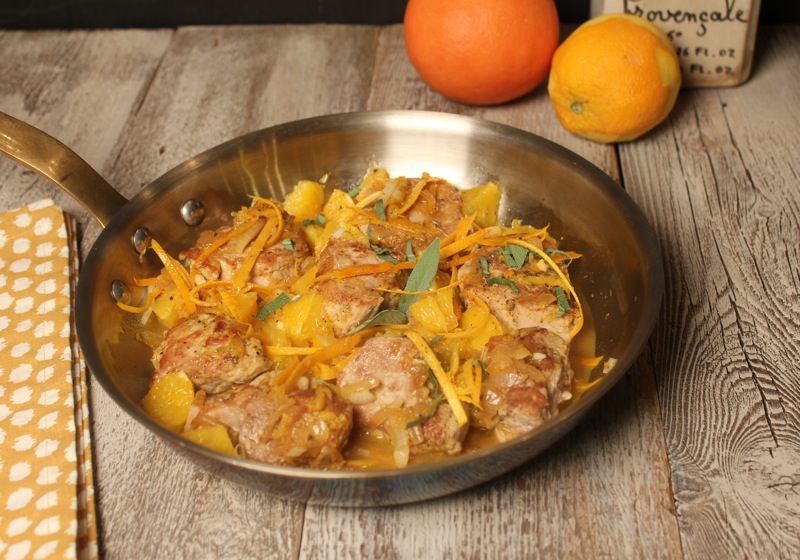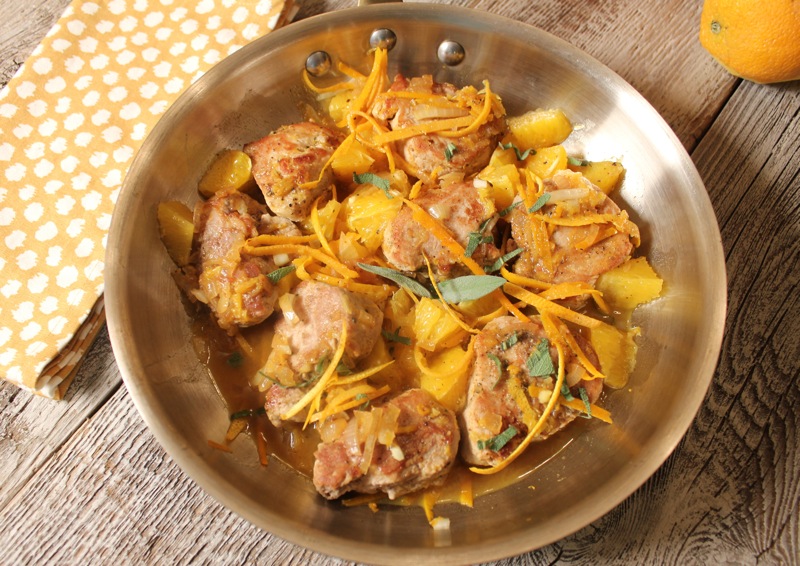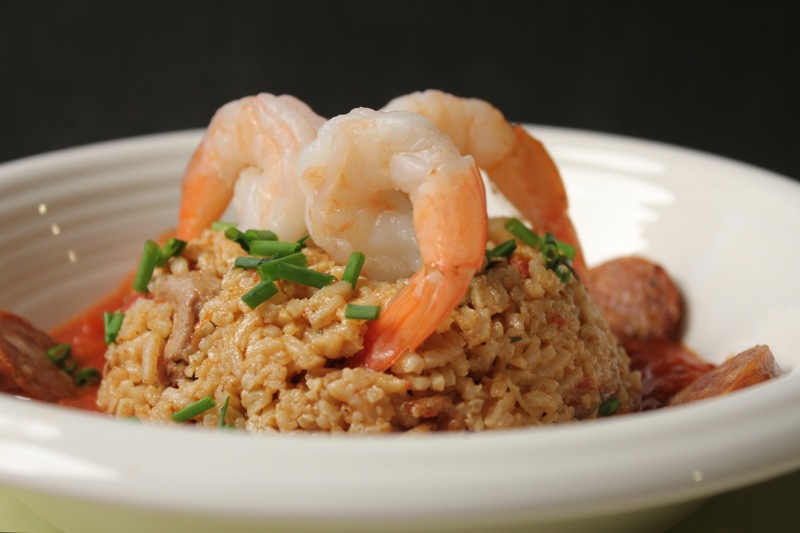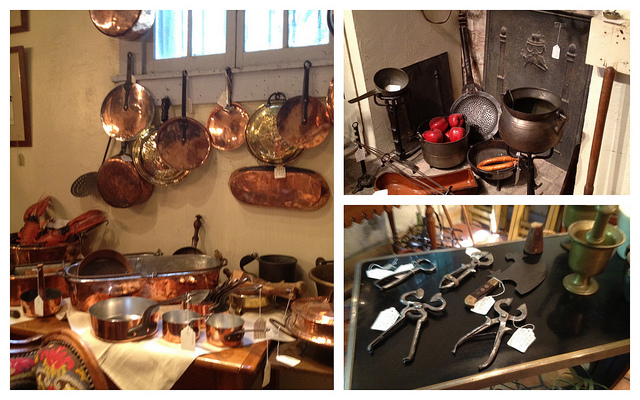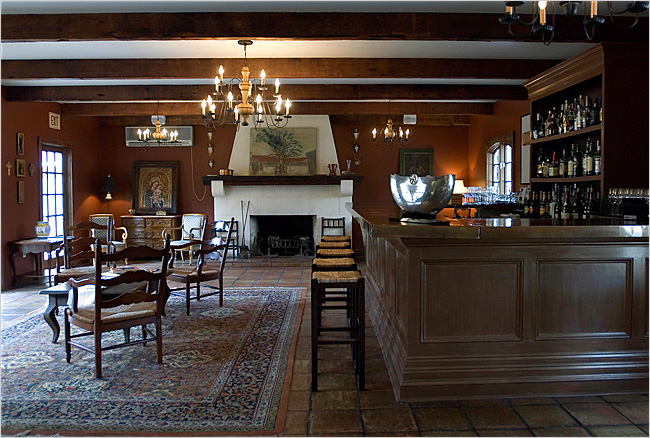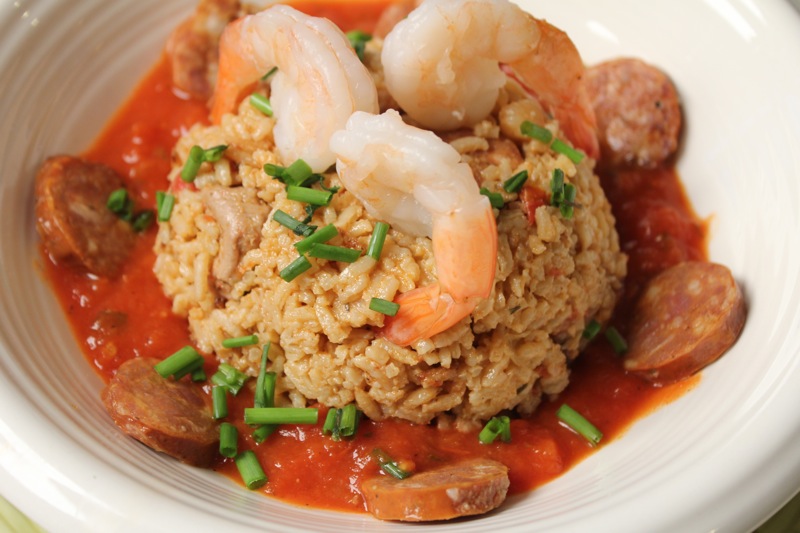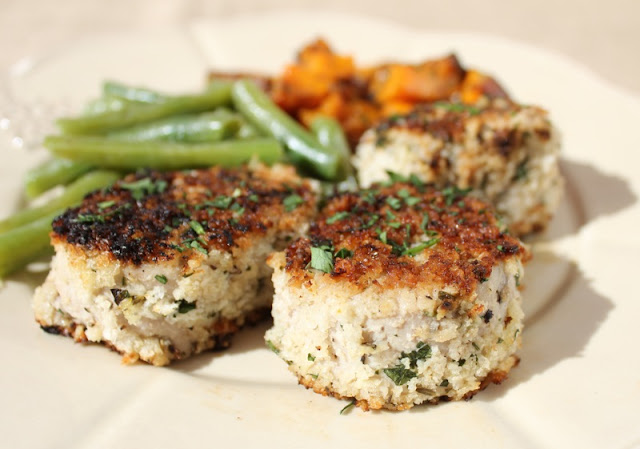There are more posts coming on our trip to France, but I felt the need to get back into the kitchen at Lake Lure and do some cooking. I haven’t abandoned France all together because this recipe came from Dorie Greenspan’s book Around My French Table. Pork tenderloin is such a versatile cut of meat. You can cook it whole on the grill, slice and pound it into medallions, or in this case just cut it into eight even chunks and saute it briefly with flavorings.
Family and friends stayed at our cottage while we were on our trip. I had left a bag of oranges in the produce drawer of my refrigerator and for some reason they were still there when we got home. Not wanting to waste them, I found this recipe that puts oranges to a good use.
This was a quick meal to pull together. I served the tenderloin with couscous and broccoli. The orange sauce flavored with cardamom was very refreshing.
I had many wonderful meals while traveling, but it is good to be back in my own kitchen cooking the kinds of food that make me happy.
FRESH ORANGE PORK TENDERLOIN (Adapted from Around my French Table by Dorie Greenspan)
4 large navel oranges
1 large pork tenderloin, about 1 1/2 pounds
1 tablespoon unsalted butter
1 tablespoon mild oil
Salt and freshly ground black pepper
1/2 to 3/4 teaspoon cardamom
1 medium onion, finely chopped
Peel 2 of the oranges all the way down to the flesh, then cut between the membranes to release the segments. Cut the segments crosswise in half. Remove the zest from the other 2 oranges with a zester or vegetable peeler, being careful to avoid te white cottony pith if using a peeler; if you removed the zest with a peeler, slice the strips into lon thin strands. Cut the zest into pieces 1 to 2 inches long. Squeeze the juice from the 2 zested oranges.
Cut a large tenderloin into 8 pieces. Try to get the thickness of the pieces as even as possible, so they will all cook in the same amount of time. Pat the slices dry between paper towels.
Put a large skillet over medium-high heat and add the butter and oil. When the mixture is hot, add the pork slices, without crowding, and brown them for 2 to 3 minutes on each side; season with salt and pepper and cardamom when you turn the pieces over. Add the orange zest, juice, and onion, season everything with salt and pepper, and give the pan a stir. When the sauce produces one little bubble, reduce the heat to low and cover the pan. Cook the pork at the gentlest simmer for 10 minutes.
Add the orange segments, cover, and continue to simmer for 3 minutes more, or until the pork is tender and cooked through.
Remove the lid, and if you think the sauce needs to be cooked down a bit, transfer the pork and orange segments to a warm serving platter and boil the sauce until it reaches the consistency you want. Taste for salt and pepper and serve immediately. Garnish with fresh sage or parsley if desired.
